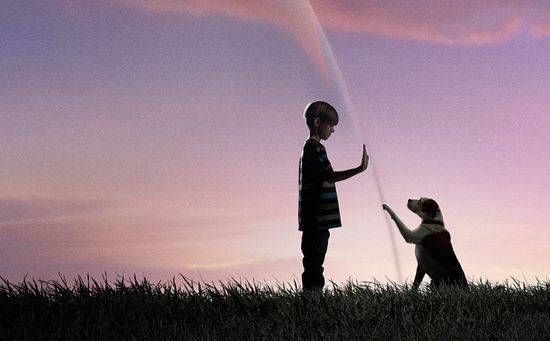Last night, in case you missed its relentless advertising campaign, the first episode of Stephen King, Steven Spielberg, and Brian K. Vaughan’s Under the Dome premiered on CBS. The TL, DR? Efficiently entertaining, competently-made television that felt like LOST in Maine (Vaughan’s sole previous television credit was on LOST and the cast featured several LOST regulars). For people who have read the book it was a trip to Bizarro World where familiar names were attached to unfamiliar characters and everything felt just slightly off. If there was a surprise, it was that this was a perfect example of modern day television which, oddly enough, fails at visual spectacle but triumphs at character development.
After the jump: a woodchuck turns into a cow, you can judge the character of a man by the hair on his face, and Maine gets integrated. Also: plenty of spoilers.
Weighing in at a whopping 1072 pages, Under the Dome was published in 2009 and became Stephen King’s second-longest novel after It (I’m not counting his overstuffed 1990 re-release of The Stand which pumped it up to a steroid-addled 1152 pages). The story of a community sealed off from the world by an invisible force field was an idea King had picked up and abandoned a couple of times in a manuscript called The Cannibals which he’d gotten about 70 pages into in 1978—around the time he wrote The Stand—before dumping it, then picking it up again in 1982. This time he got further. Writing on his website he says:
That second try was mostly written in Pittsburgh, during the filming of Creepshow. I spent two months in a depressing suburban apartment complex that became (with the usual fictional tweaks) the setting for the story. It was called The Cannibals, and this time I got a lot further—almost five hundred pages—before hitting a wall. I assumed the manuscript was lost. Long story short, it turned up—battered, and with some pages missing, but mostly complete—in the summer of 2009.
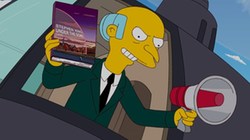 King wrote this essay and even posted a chunk of The Cannibals online to prove he hadn’t stolen the idea after some folks pointed out that Under the Dome was simply The Simpsons Movie with less jokes and more necrophilia. In science fiction, the idea goes back further than that. B.R. Bruss wrote about it in his 1953 novel, L’Apparition des Surhommes. Clifford Simak wrote about it in 1965 in All Flesh is Grass. But neither of them approached it with King’s great, gory, gleeful embrace of carnage, mayhem, and red-blooded spectacle.
King wrote this essay and even posted a chunk of The Cannibals online to prove he hadn’t stolen the idea after some folks pointed out that Under the Dome was simply The Simpsons Movie with less jokes and more necrophilia. In science fiction, the idea goes back further than that. B.R. Bruss wrote about it in his 1953 novel, L’Apparition des Surhommes. Clifford Simak wrote about it in 1965 in All Flesh is Grass. But neither of them approached it with King’s great, gory, gleeful embrace of carnage, mayhem, and red-blooded spectacle.
Under the Dome is, like It and The Tommyknockers, a Stephen King story about aliens coming to earth and acting like jerks. In this case, they drop an impenetrable dome over the town of Chester’s Mill, Maine and let everyone go bananas and kill each other for a while. Eventually, a band of survivors contact the aliens responsible, help them overcome peer pressure, and use feelings to negotiate a lowering of the dome, but not before most of the town is roasted to death in a giant meth-fueled firestorm of epic proportions. It’s a fun book, but not a great one, more of a satisfying B-grade summer blockbuster than one of King’s deeper efforts. Still, it goes down easy and doesn’t leave you feeling like your time was wasted.
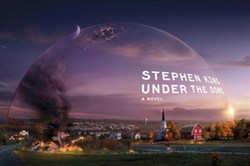 The TV show, with its pedigree names (Spielberg! Vaughan! CBS!) is that familiar breed of nighttime drama that wears its ambitions on its sleeve: the season-long fantasy mystery in the vein of LOST (see also: American Horror Story, Fringe, Heroes). And, thankfully, it looks like it’s going to deviate significantly from the book, which is a relief since I haven’t been able to locate even the most hardcore Stephen King fan who will defend the book’s ending. What’s strange is that the book excelled at things I expected the TV show to do better, while the TV show got right things that I thought were the province of books.
The TV show, with its pedigree names (Spielberg! Vaughan! CBS!) is that familiar breed of nighttime drama that wears its ambitions on its sleeve: the season-long fantasy mystery in the vein of LOST (see also: American Horror Story, Fringe, Heroes). And, thankfully, it looks like it’s going to deviate significantly from the book, which is a relief since I haven’t been able to locate even the most hardcore Stephen King fan who will defend the book’s ending. What’s strange is that the book excelled at things I expected the TV show to do better, while the TV show got right things that I thought were the province of books.
In King’s Under the Dome, the characters started out broad and only got broader. “Big Jim” Rennie, the big bad guy, starts as a Bible verse-spouting hypocrite and used car salesman who sells crystal meth on the side, and his character development mostly consists of adding murder and a few more crimes to his plate over the course of the book. His son, Junior, starts the book as a psychotic, woman-beating rapist, but his character is later revealed to have a third dimension consisting of migraine headaches, paranoid delusions, and sadism. It’s like King started his characters at 11 and then had nowhere else to go but 12, 13, 14, and on into outer space.
 In this day and age of delicately shaded, morally complex TV characters like Tony Soprano and Walter White, these cardboard caricatures will not pass muster, and so CBS’s Under the Dome is immediately a massive improvement on the book in terms of character development. Here, Big Jim is an upright, well-intentioned guy who’s a bit too hungry for power, but he mostly seems to want to do the right thing. It doesn’t hurt that he’s played by the enormously likeable Dean Norris from Breaking Bad. Junior Rennie comes across as a good kid with some genuine mental problems, and we’re an hour into the show and he hasn’t murdered any women or had sex with their corpses yet, so already that’s doing better than the book.
In this day and age of delicately shaded, morally complex TV characters like Tony Soprano and Walter White, these cardboard caricatures will not pass muster, and so CBS’s Under the Dome is immediately a massive improvement on the book in terms of character development. Here, Big Jim is an upright, well-intentioned guy who’s a bit too hungry for power, but he mostly seems to want to do the right thing. It doesn’t hurt that he’s played by the enormously likeable Dean Norris from Breaking Bad. Junior Rennie comes across as a good kid with some genuine mental problems, and we’re an hour into the show and he hasn’t murdered any women or had sex with their corpses yet, so already that’s doing better than the book.
There are a lot more changes in how characters are portrayed, and in almost every case the CBS version does it better. This series may only run 13 episodes but they’re taking their time and not showing their cards up front the way King did in his book, but don’t get me wrong: this show is still stuffed with television clichés. Characters threaten to reveal vital plot information but only manage a cryptic half sentence before falling down dead. Duke (Jeff Fahey), the police chief, has his heart problems foreshadowed so heavily that by the time his pacemaker finally explodes it feels more like a foregone conclusion than an actual surprise. The two most attractive white people on the screen instantly have sexual tension, and they both turn out to be vital to the plot.
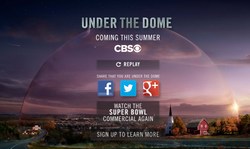 And, this being television, machismo is indicated by facial hair. Duke is all rugged Yankee lawman, and he has a fine mustache and chin shrubbery, while Dale “Barbie” Barbara (Mike Vogel) is a badass who sports the thickest five o’clock shadow to hit the small screen since Matthew Fox on Party of Five. Not coincidentally, evil Big Jim Rennie is as bald as a newborn baby, and weasely Junior has the hairless face and greasy hair of Bobby Briggs on Twin Peaks. But it’s a testament to how broad the book’s characters are that even network TV requires them to exhibit more nuance. But there are two other major changes.
And, this being television, machismo is indicated by facial hair. Duke is all rugged Yankee lawman, and he has a fine mustache and chin shrubbery, while Dale “Barbie” Barbara (Mike Vogel) is a badass who sports the thickest five o’clock shadow to hit the small screen since Matthew Fox on Party of Five. Not coincidentally, evil Big Jim Rennie is as bald as a newborn baby, and weasely Junior has the hairless face and greasy hair of Bobby Briggs on Twin Peaks. But it’s a testament to how broad the book’s characters are that even network TV requires them to exhibit more nuance. But there are two other major changes.
One of them is that on CBS, Chester’s Mill, Maine is populated by numerous actors of color. Maine is one of the whitest states in the union, and Stephen King writes some of the whitest books around, but on CBS Under the Dome is as diverse as the photos in a high school math book with Hispanic deputies, African-American DJs, lesbian couples, and Asian-Americans doing science things. It’s nice to see that either color-blind casting or television’s quest to appeal to every demographic has successfully integrated King’s fiction. My guess is that the televised version of Under the Dome looks a lot more like 2013 America than King’s book.
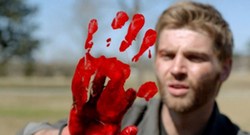 The other major change comes in the form of Dale “Barbie” Barbara. In both the book and the TV series he’s a rugged outsider who’s just passing through town but gets trapped there when the dome descends. He’s ex-military in both, but in the book he’s a short order cook who is run out of town when some local thugs jump him and he beats their asses. It’s an introduction almost identical to the way Nick Andros enters the story in The Stand, and it’s always bummed me out to see King repeat himself like this: two rugged manly men who hate violence but clean the clocks of a gang of locals who jump them on the road just as they’re moving along.
The other major change comes in the form of Dale “Barbie” Barbara. In both the book and the TV series he’s a rugged outsider who’s just passing through town but gets trapped there when the dome descends. He’s ex-military in both, but in the book he’s a short order cook who is run out of town when some local thugs jump him and he beats their asses. It’s an introduction almost identical to the way Nick Andros enters the story in The Stand, and it’s always bummed me out to see King repeat himself like this: two rugged manly men who hate violence but clean the clocks of a gang of locals who jump them on the road just as they’re moving along.
In the series, we open with Barbie burying a corpse in the first scene, reporting to his superior by phone that a deal went bad, then sharing a moment with Dean Norris that seems to guarantee that the two men are connected via a criminal enterprise. It’s a bit cookie cutter (sometimes television seems to present an America where the only three professions are cop, drug dealer, or innocent bystander) but it promises a lot more narrative juice and thorny complications down the road and is already layering Barbie in more moral contradictions than he had in the book.
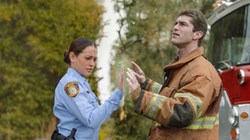 Where the series fails, strangely enough, is where I had thought it would most succeed: spectacle. King’s book kicks off with the descent of the dome and it’s a breathless, impeccably staged opening 100 pages of murder, mayhem, and death from above. A twin-engine plane smashes into the dome, a big rig rams into it, a woodchuck gets chopped in half, a guy doesn’t see it and walks into it, breaking his nose, and birds in the hundreds fly into it and break their necks. It’s all staged with remarkable skill by a master showman. King has always been a very visual writer and in his hands this beginning soars.
Where the series fails, strangely enough, is where I had thought it would most succeed: spectacle. King’s book kicks off with the descent of the dome and it’s a breathless, impeccably staged opening 100 pages of murder, mayhem, and death from above. A twin-engine plane smashes into the dome, a big rig rams into it, a woodchuck gets chopped in half, a guy doesn’t see it and walks into it, breaking his nose, and birds in the hundreds fly into it and break their necks. It’s all staged with remarkable skill by a master showman. King has always been a very visual writer and in his hands this beginning soars.
On TV, it comes off as lame. A few birds fall out of the sky with stock whooshing sound effects. A single truck smashes into the dome. The plane crash in the book is a fiery spectacle that imparts an ominously apocalyptic note to the proceedings, but on TV where we can actually see that fireball and the incongruous black smudge it leaves hanging improbably in the sky, it feels rote and tossed off. This is a TV series that lobs underhanded softball throws when it should be sending 100 mph fastballs right over the plate.
There’s a beautiful moment in the book when Myra Evans is gardening and she reaches out to pluck a pumpkin just as the dome descends, neatly amputating her arm. The scene is beautifully written, and perfectly detailed. Her husband can’t get through to 911 and he helplessly holds a tourniquet on spouting stump as a CD that was playing runs out and leaves him in silence, listening to police sirens in the distance. It’s a small human moment that highlights the scope of the disaster, showing us the big picture and the small picture all at once. In the series, a nameless, handless woman is found by Barbie and Julia Shumway (local redhead, reporter, and sexual tension generator for Dale) and dispensed immediately. It’s a banal moment that lasts about five seconds and has less dramatic heft than the ad for Stephen King’s new book, Dr. Sleep, that runs a few minutes later. Really, TV? That’s the best you can do?
The spectacle here feels cheap, like they didn’t have the budget for it, but instead of narrowing down their moments they chose to show them all, lingering over their lack of depth. There is, however, one saving grace: they turn the woodchuck into a cow. In the book, one of King’s best characters is a fat, middle-aged woodchuck out for a morning stroll who gets chopped in half by the dome. Television, thankfully, doesn’t have time for woodchucks. In a moment that pretty much everyone will be talking about, the TV series changes him into a bisected cow. It’s a great gag, and one of the few visual moments that people will remember from this show because it’s one of the few visual moments that the show expends any effort on.
Then again, if they want us to stay committed to this series for 13 episodes, then it’s not visuals we’ll need. King already gave us those in his book. This series will live or die based on its characters and how much we get wrapped up in their mysteries and so far CBS is pulling ahead of the book. And that’s the weird world we live in. With more and more books reading like pitches for screenplays and TV series, it’s television that’s becoming the writer’s medium, and so Under the Dome might be one of those rare cases where the movie actually turns out to be better than the book.
Grady Hendrix is the author of Satan Loves You, Occupy Space, and he’s the co-author of Dirt Candy: A Cookbook, the first graphic novel cookbook. He’s written for publications ranging from Playboy to World Literature Today and his story, “Mofongo Knows” appears in the anthology, The Mad Scientist’s Guide to World Domination.










